Write Us
We are just a call away
[ LET’S TALK AI ]
X
Discover AI-
Powered Solutions
Get ready to explore cutting-edge AI technologies that can transform your workflow!


If the tools are not in place for project management, planning and execution could be risky, disorganized, and ultimately costly, right? Proper planning is essential for every organization’s strategies, as they differ by the complexity of your project and your app development company. Now the question arises whether the step gate process is proper for you.
Stage Gate Process has a long and rich tradition, which is still helpful in certain areas where risk management compliance and structured decision-making are essential. However, its inflexibility is challenging in fast-paced environments and requires adapting or blending to succeed.
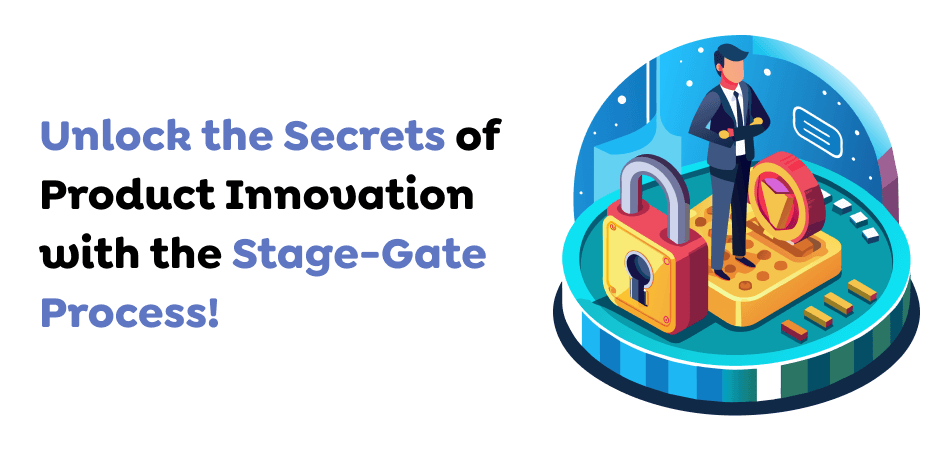
These days, IT departments are seeking to strike the perfect equilibrium between traditional and agile software development techniques. Although theoretically, these might appear good options, actual implementation may prove otherwise. Agile projects tend to experience constant scope growth without a plan, and well-documented procedures become administrative and inefficient.
In this blog, we will examine the Stage Gate Process used in SDLC. So, continue reading this blog until the end.
Also Read : Driving Progress The Rise Of Software Development in The Middle East
The Stage Gate process is a project management method that divides the project into stages with distinct decision points (“gates”) within them. Companies can use this technique to develop software, but it isn’t the most widely used method. Stage Gate methodology originated in the 1960s during the largest aerospace and pharmaceutical firms’ New Product Development (NPD) procedures. These industries had complex projects that required large amounts of resources, risk management, and regulatory hurdles. Stage Gate’s process template allowed the projects to be split into manageable stages, providing clear guidelines for making go-or-no-go decisions.
This Stage Gate process aims to enhance decision-making and plan results. If you do not spot mistakes during your project, they may build upon each other, making them more difficult to rectify. If you can review your schedule as you move through the process, you’ll be able to spot mistakes more easily and address them immediately. Using multiple checkpoints provides the team with clarity when working in tandem on projects.
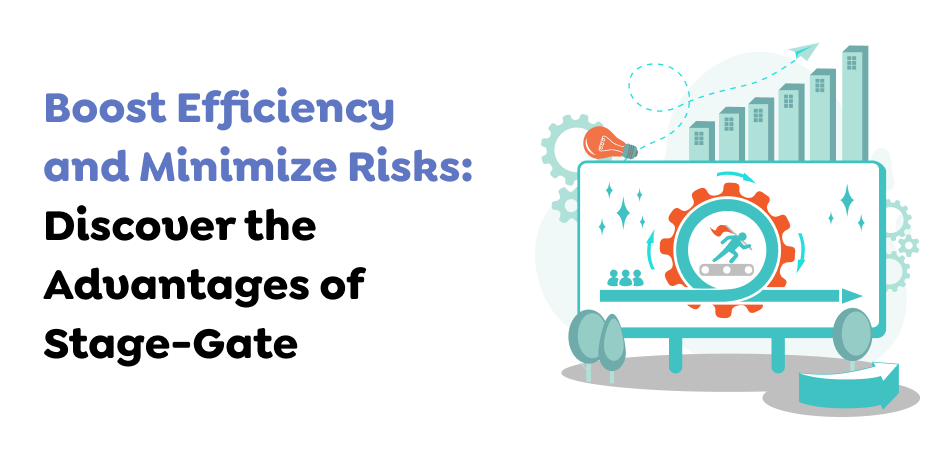
If done properly, the stage gate process can improve the quality of your software development process. However, it’s not without its own pitfalls. The process requires teams to establish governance in order to allow project execution. Integrating digital transformation tools into the stage-gating process can enhance the performance of your app development team.
It might seem counter-intuitive to say no to ideas when pushing for new ideas, but all ideas are worthy of consideration. The model of the stage gate can help you identify bad ideas before spending excessive time and resources for the idea.
Creativity can be hindered when there is a standard list of procedures for each project. Teams that use stage gating on every project risk producing poor-quality products or rescinding the project entirely because they aren’t given the opportunity for creativity.
Establishing a stage gate can help workers focus on what they must do at the appropriate time. In many cases, businesses start new initiatives without a proper reason or business justification, which can result in common issues such as overspending or a vast increase in the scope of projects.
Projects are constantly monitored throughout the project through stages, ensuring they achieve their objectives with minimal modifications. Continuous checkpoint reviews ensure that any risks or issues are identified at the first possible opportunity and allow them to be dealt with promptly.
Also Read : AI in Agriculture Discovering The Role Of Artificial Intelligence in Agriculture Projects
The Stage Gate methodology can be adapted, which means it can be adapted to different situations in an organisation. Every organization can implement different staging gate designs to meet its specific areas or business procedures. The graphic below illustrates how this could be done in greater detail.
The gates for the stage can be easily adapted to scale. It is possible to start with a straightforward model that can be applied to just one department or kind of project. As time passes, it is possible to modify the model developed to manage projects of a higher level of complexity.
Companies only need to pursue initiatives that support their goals, either directly or indirectly, to help ensure that the project is relevant to their goals. Each stage allows you to align your project with the company’s goals.
Businesses often spend a lot of money on unsuccessful projects. Stage-gate allows companies to monitor the progress of their projects regularly. Then, they can eliminate those who are not performing during the initial stages of the project, reducing costs.
Reviewing the progress of each step isn’t a single-person task. These reviews involve teams of cross-functional members who review and make decisions about a project’s fate. Cross-functional teams increase the chance of product weaknesses being discovered early.
Also Read : React Native Market Overivew For Cross Platform App Development
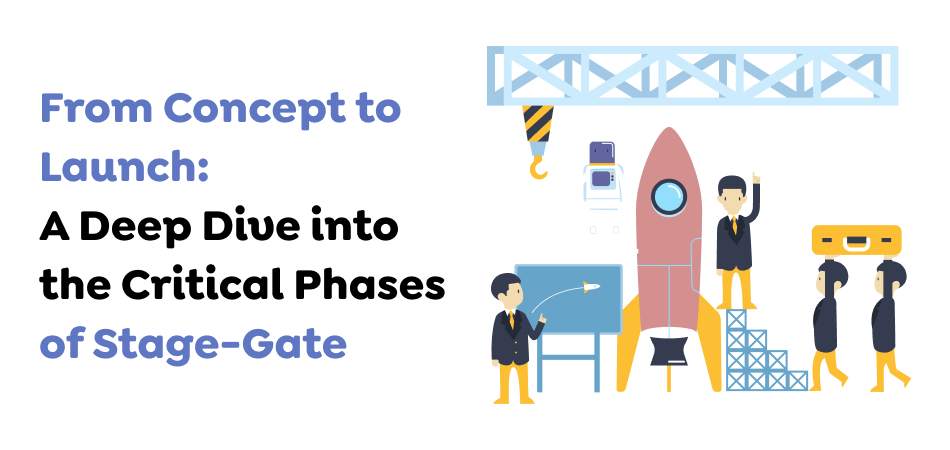
Various vital aspects of the Stage Gate process help guide project planning and decision-making, so let’s have a look at them:
Projects are divided into distinct phases, each a critical step in the development process. The most common phases are conceptual development, feasibility studies and design, development testing, and the launch.
The Decision Points, also referred to as gates, are at the conclusion of each phase. These gates let project participants evaluate their performance and decide whether to continue until the next stage, alter the plan, or even end the project.
Specific criteria are established for every gate. They outline the exact targets and requirements the gate must achieve for it to go through the gate successfully.
Multi-functional teams of individuals from different departments and disciplines cooperate to ensure that the various aspects of the project are fully evaluated.
Thorough reports and documentation for the project must be prepared at each entry point to give a clear picture of progress and any required changes.
Software development uses the Stage Gate process. This process is reminiscent of hybrid approaches such as the Spiral Model and Rational Unified Process, which connect two of the most powerful opposing concepts: Waterfall and Agile. The Stage-Gate Process is rather simple because it uses the term “gates” in the sense that milestones exist in any other software development method.
But, it also includes creating business cases and ideas and business case creation, which are typically absent in standard SDLC workflows. The stage gate process for new product development offers a greater holistic process in which the final product can be a natural consequence of the requirements of the business.
Also Read : Investing in Manufacturing Inventory Management Software Cost And Benefits
Complex, Large-Scale Project: Stage Gate can provide the structure and oversight for large software development projects.
Highly Controlled Industries: A few industries are subject to strict compliance rules, which benefit from the structured method to Stage Gate.
Risk-Averse Companies: Stage Gate’s decision-making points can offer reassurance for businesses focusing on risk reduction.
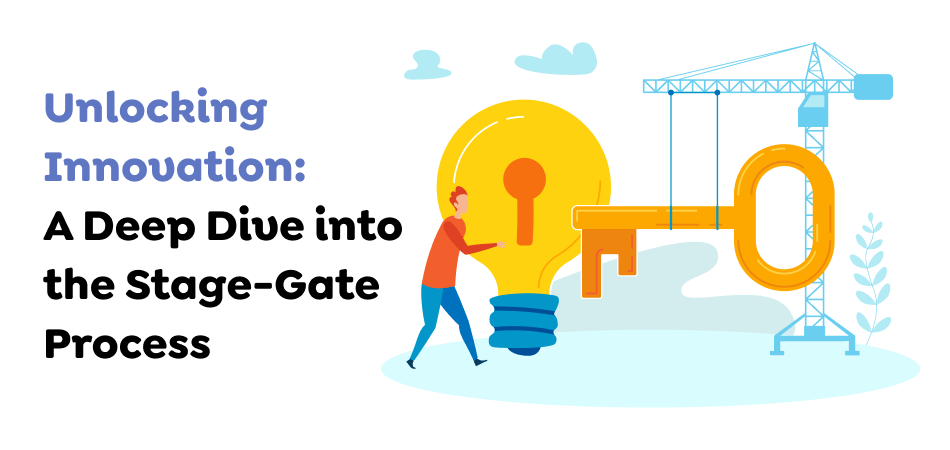
The classic Stage-Gate Process, or Phase-Gate Process, includes five fundamental stages after discovery or the ideation process has been completed. They include scoping, constructing the business case, creating tests, validation, app testing, and finally, release.
Also Read : Sneak Peak Real App Testing Process Techugo
The process of discovery, also known as ideation, includes identifying an idea you want to explore. It is referred to as the idea generation phase. It can involve a variety of stages depending on the strategies a business might employ to generate new ideas and better processes to apply.
It could involve interdepartmental brainstorming and market research. There could also be customer feedback, supplier feedback, or product teams. For certain instances, it’s important to consider an offshore development center model when making cost-effective business decisions.
In this step the product’s effectiveness is determined based on a range of variables. These could include the need for the product in the marketplace, threats from competitors, economic and market circumstances, advantages and disadvantages of the product, and so on. This could be a good moment for businesses to turn to SWOT analysis.
When the concept has completed the initial step then it’s time to create the business case, a plan for the project, and a feasibility study. This is the final stage of developing the idea because subsequent stages comprise development tests, launch, and development.
This stage is also broken down into four phases because it is a complicated phase requiring careful consideration to prevent further mistakes. The four phases comprise an analysis and definition of the product and then the creation of the business and project plans.
The stage of app development in the Stage Gate Process utilizes the blueprints from the previous stages to implement the already outlined plan. In this stage, it is determined that the idea is feasible and being identified and evaluated. The business plan and the case study are complete and considered suitable for development.
The stage of development could comprise a few initial designs and tests, followed by the creation of a prototype. Marketing plans must also be in place and should be in line with the objectives already set for the program. The project’s timeline is reviewed as it develops to ensure its progress is in line. In the next phase, an initial prototype should be made and ready for thorough tests.
The second phase in the Stage-Gate Process validates the product. The actual product is reviewed, and the process involves the acceptance of customers and other financial aspects that go with the development. The testing process requires near as well as field testing.
To emphasize the importance of this process it is possible to look at an example from Microsoft that sacked its entire testing staff. Changes in how testing is conducted resulted in major bugs discovered in Windows 10 that have haunted Microsoft since its launch. It’s a serious mistake in the testing or confirmation procedure.
After passing through the primary points, the product is released on the app store. The product developer needs an effective marketing plan to attract customers’ interest and generate buyers. Launching the product also requires additional considerations, such as the amount of production required to meet the anticipated market demand and delivery methods, as well as the resolution of customer complaints and other aspects.
It’s common for software developers to be able to spot bugs before they occur and implement fixes upon hearing from their customers about complaints and feedback about software problems. Most operating system developers prioritize support for enterprises as opposed to regular users. On the other hand, hotfixes tend to be quickly released, especially after major issues are found in a new product’s launch. Some years ago, the issue may not be as crucial as today, thanks to various hardware and software factors to consider when launching a software product larger than operating systems.
Also Read : How To Upload An App On App Store?
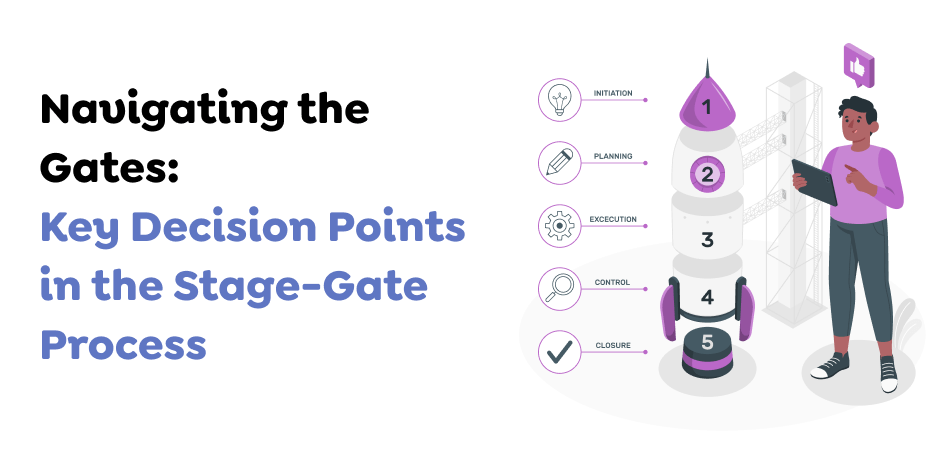
The most important part of the process is the figurative gates. There are checkpoints project teams must pass through before moving on to the next step.
Every idea proposed during the exploration and ideation process must be reviewed before proceeding to the scoping stage. Sorting through the ideas and determining the most suitable concepts is essential. When the first screening is completed, companies can kill concepts because of various factors, like the idea being outdated or not in line with organizational objectives.
Ideas subject to scoping have to go through the second stage. Based on the information reviewed, the idea may be granted either a Go or Kill. Examples include ideas that aren’t easy to determine, which could be rejected or relegated to be re-examined. In contrast, ideas that are approved are then taken to the design phase.
The third gate provides a line between the idea’s creation and design. Businesses using the stage-gate method must evaluate ideas’ potential from a commercial perspective. For example, an objective gate should not allow the ideas of top management to move through the development stage.
Also Read : Dallas is The Mobile App Development Hub Driving Innovation
Gate 4 offers the possibility of evaluating how the product has performed in testing and verification. A few products can pass and then receive a Go signal. However, certain products could get a Hold or a Conditional Go if they fail the two areas of the test to be dealt with. Products whose effectiveness can’t be verified or do not meet the industry standard may be subject to a “Kill.”
The final gate tests an item’s market suitability. Before its release, the product must meet the requirements for quality and accuracy. It also evaluates the company’s general preparedness. A product, for instance, might not pass through the gate unless a business is certain that its roll-out and initiatives are currently implemented.
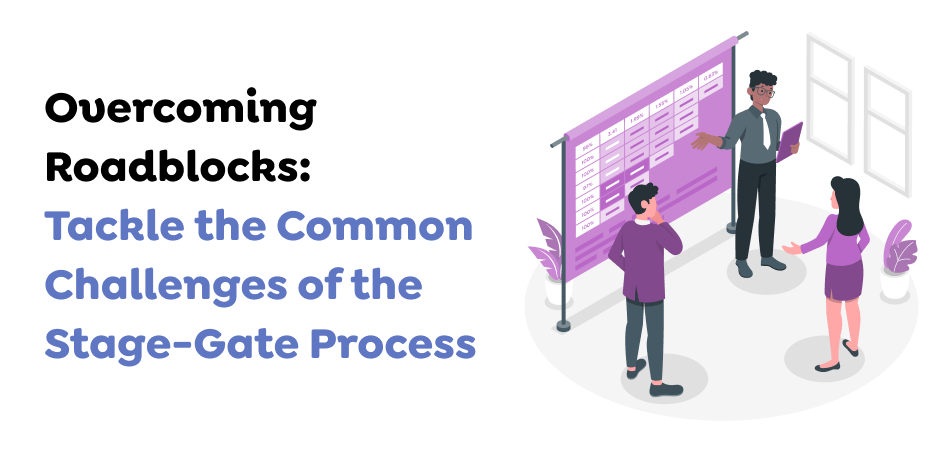
The Stage Gate model is a widely employed framework for overseeing initiatives to innovate products. It breaks the process into phases, each with a list of defined activities and deliverables. Then, some gates are the decision points at which the project’s status is assessed and whether it is approved. This model is designed to minimize uncertainties and boost effectiveness by providing clear guidelines for every phase in the process.
But, the Stage-Gate model does not come without risk. The most common issues and dangers that mobile app development company in USA confront when working with this method are:
Scope creep is the potential for the project’s requirements and the features to increase or alter in time because of changing needs of the customer and market conditions or the expectations of stakeholder stakeholders. The effects of scope creep include delays, overruns of costs, quality problems, and losing focus.
To stop the possibility of scope creep, software designers need to define their details clearly and then document the project as a project charter or in a document detailing the requirements for their product. The scope should be communicated to all stakeholders and gatekeepers. project’s scope to all of the people involved and gatekeepers. They should also ensure that any modifications can be justified, approved and monitored.
“Resource allocation” refers to the division of money, time, personnel, equipment, and time between the various stages and project phases. Allocating resources can be difficult, particularly when multiple projects are competing for scarce resources or when there is uncertainty or change to the scope, timeframe, or budget.
To maximize resource allocation, Product developers must prioritize projects according to their strategic significance, anticipated returns, and risk. Additionally, they should monitor every project’s performance and resource consumption and adjust their allocations accordingly.
Innovation culture is the beliefs, values, and actions that encourage innovation, creativity, and learning within the organization. The culture of innovation can be the key success factor in the Stage-Gate model since it allows product developers to develop innovative and beneficial ideas, test and verify them, and learn from mistakes and feedback.
To foster an innovative culture, software developers must promote the same vision and goal to drive product development. They should encourage collaboration and diversity, learn and take risks, and celebrate achievements.
Also Read : Interesting Facts Bet You Never Knew About Mobile App Developers
Gate bias is the impact of personal or organizational elements on gates, including emotional, political, preference or motivations. The influence of gate bias could cause inaccurate or uncoordinated judgments like approving projects that are not strong, rejecting those that look promising, and removing or changing gates.
To reduce bias in gate selection and ensure that product designers set clear and objective criteria for every gate, including the potential for market, technical feasibility and strategic alignment or financial viability. It is also important to involve multiple and independent gatekeepers like cross-functional teams, consultants from outside, or clients and encourage input and discussions.
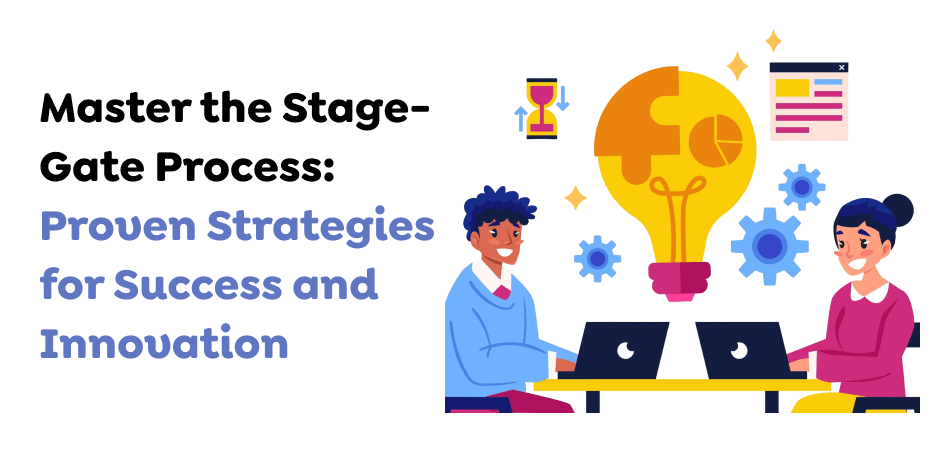
Optimizing the Stage Gate process has an opportunity for better outcomes regarding software development and the efficiency of operations. In this regard, you should consider using the strategies below to improve the efficiency of your Stage Gate processes:
Create precise goals, deliverables, and progression standards for each step. It is essential to clearly define the information and evidence required to make each step an informed decision. Reduce the impact of subjectivity through the use of objective and quantifiable standards.
Develop a culture of cooperation and collaboration between the diverse teams and the various stakeholders that are integral to the development process. Promote the synergy of cross-functional teams at the beginning of a project, permitting the integration of diverse perspectives and expertise. For instance, involve departments like marketing, finance, engineering, and production to anticipate potential issues earlier in the development process.
Also Read : Navigating Expenses Of A Finance App With An Accounting App Development Company in UK
Do not have redundant gates or crossing ones to reduce unnecessary bottlenecks and administration complexities. Make sure to balance the necessity for gates with a sensible method, ensuring that pivotal junctions are properly protected. Review and continually improve the gate process based on insights gleaned from prior work.
Integrate risk assessment and management at every stage to spot potential bottlenecks or uncertainties in advance. Create contingency plans to deal with the most risky areas while ensuring smoother progress through the subsequent steps.
Recognize that project homogeneity is rare therefore, it is important to customize the sequence and number of phases based on the project’s scale and complexity. Create custom-tailored stage projects and deliverables to meet the unique requirements of every project.
Also Read : A Guide To Let You Build Your Advanced Mobile AI App
The involvement of important stakeholders is vital in implementing Stage and Gate. At the beginning of the process, participate with the project manager, business unit leaders, and gatekeepers to ensure their agreement. This can help avoid the typical “not invented here” syndrome when a brand-new procedure has to be defended because it originated elsewhere.
Participation from stakeholders creates a feeling of ownership and helps smooth the transition process. When going from the designing phase through Stage and Gate implementation, it is essential to include the people using this process and those who stand to gain or lose from it.
Begin by testing your Stage and Gate process with the help of a handful of initiatives. Pilots are a great way to improve the method by analyzing real world updates. After that, you can gradually expand it to bigger teams and larger tasks. Make sure regular review sessions are held to refine the method and ensure it is in line with the business goals.
Test the process using pilot projects to identify any issues before fully-scale deployment. This also helps build momentum, ensuring that when it comes time to roll out the Stage and Gate process across the organization, it has been perfected to perfection.
Also Read : Step By Step Guide For Mobile App Development Process
Create a culture of constant improvement through post-project reviews aimed at identifying areas that have been successful and need improvement. Encourage knowledge sharing and gaining information from successful and unsuccessful projects.
Make an effort to shorten the time of each step by eliminating obstructions to progress and cutting down on delays that are not needed. Think about adopting agile development methods to increase flexibility and response speed whenever appropriate.
Perform thorough gate inspections bolstered with input from independent and seasoned reviewers. Find skilled individuals with the ability to offer valuable insight as well as constructively challenging assumptions.
Integrate customer inputs and opinions throughout the process, beginning with conceptualization, through the testing phase, and finally, validation. Involve customers regularly to ensure the final product meets their requirements and expectations.
Also Read : Exploring The Costs Of Intergrating Google Gemini Pro AI Into Mobile Apps
Use software and tools for managing projects to improve processes and boost collaboration efforts. Benefit from trending technology-driven data analytics that aid in informed assessment and decision-making throughout the product development lifecycle. Companies can, for instance, utilize advanced cloud contact center services to collaborate with team members and other stakeholders to ensure smooth communication throughout the creation process.
An efficient Stage and Gate process requires thorough gate inspections. The meetings shouldn’t be simple box-ticking exercises but include meaningful discussions about project feasibility. It is important to clearly define the criteria for making decisions and ensure that gatekeepers know what they are responsible for.
For face–to–face and virtual environments, it is essential to provide an open and positive dialogue. This will ensure that decisions aren’t purely based on predefined rules; they must also consider the real-world complexities and potential.
When your Stage and Gate process is implemented, it is not meant to be static. Consider it an ongoing system that aligns with your company’s needs. Periodic reviews are required to ensure the system is aligned with your organization’s objectives and adds value to your business.
As time passes, your company might advance up the maturity curve to allow for more sophisticated methods for implementing your process. If this happens, prepare to add more complexity to the process by using more sophisticated modern technology and techniques for making decisions depending on the need.
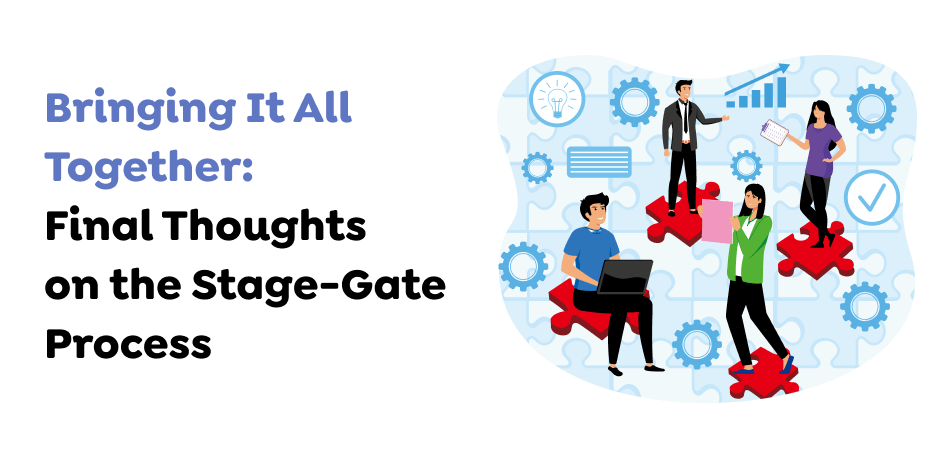
Using the Stage Gate process, there is a higher success rate, likely due to a well-defined structure and swift elimination of inefficiencies. The streamlined decision-making process helps allocate resources efficiently and reduce risk and waste. It is believed that the Stage Gate Process can provide a guideline for putting an application through multiple hoops to determine if it’s worthwhile to develop or the right time to start working on the project.
The Stage-Gate Model provides a phased process for identifying potential products and those that may not be viable to continue with. If we examine the quantity of new software products launched each year in an industry, the number of unsuccessful products will probably be higher than those that do well. Thus, it’s essential to be aware of and continually examine the ever-changing environment to change the market’s conditions.
Ready to elevate your product development with the Stage-Gate Process? Get in touch with Techugo today to discover innovative solutions tailored for your success!
Write Us
sales@techugo.comOr fill this form